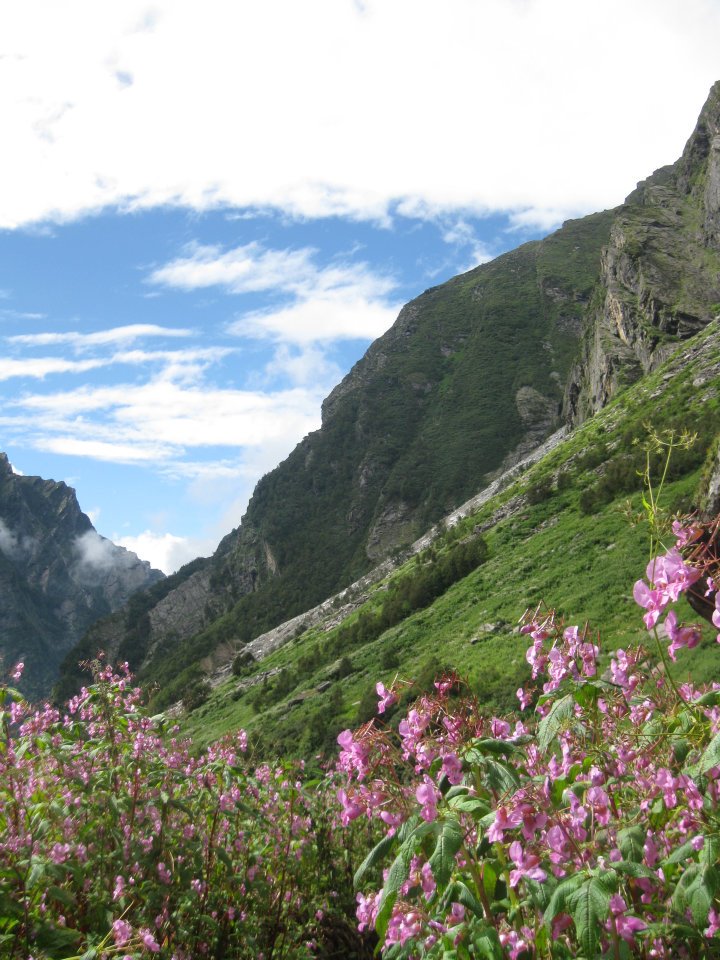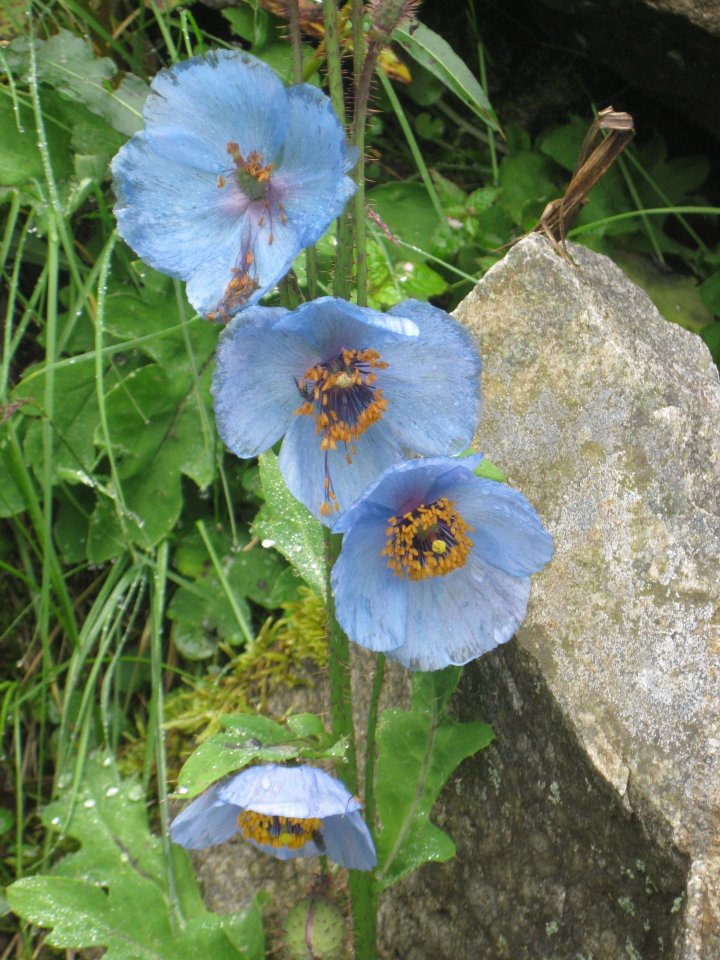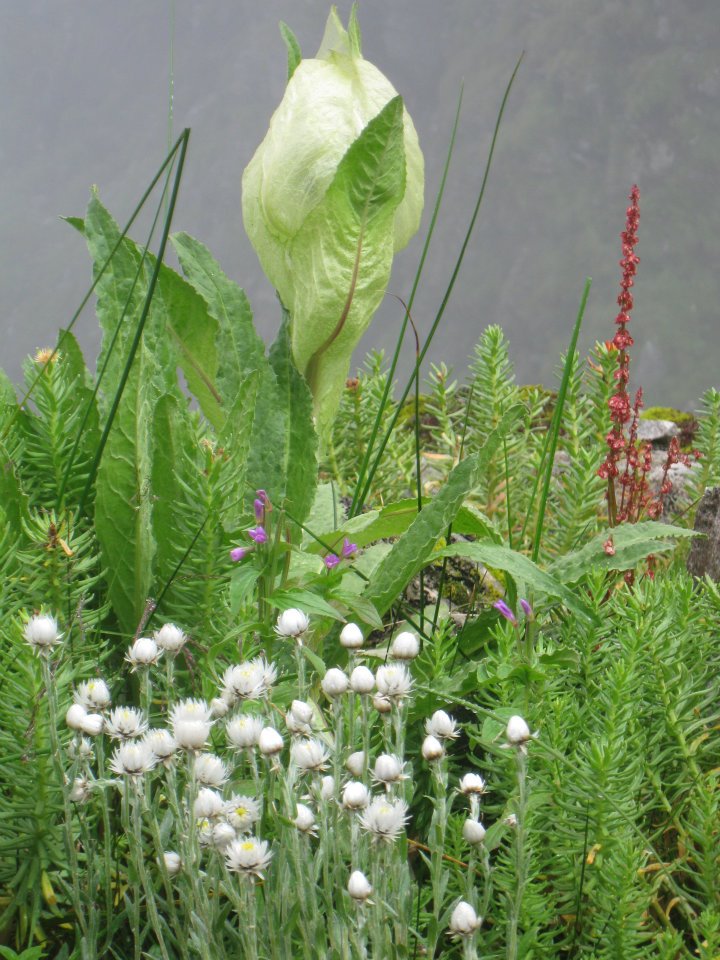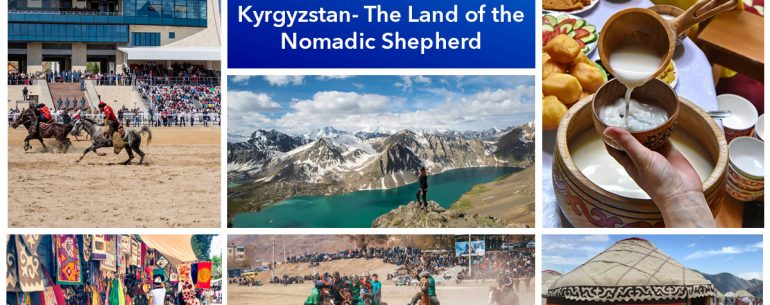
The monsoons make magic in one part of the Himalayas. Regular showers during the wet season transforms the largely snow bound vale into undulating meadows of picture-perfect flowers. Framed by towering snowcapped mountains, the Valley of Flowers national park is a breathtaking sight to behold.
The idea of a vista of blossoms as far as the eye could see was enough enticement for us to pack our bags and undertake an expedition rife with possibility. To get to the valley, it is necessary to reach Govindghat, a tiny hamlet at the foot of the 17 km trek up to the high altitude hanging valley. Various transport options are available to reach Govindghat from Delhi (about 500kms away) but with inclement weather conditions prevailing, hiring a four wheel drive to us seemed like the most comfortable option.
The rain beat down a steady tattoo as our sturdy vehicle wound its way up the Garwhal region. The downpour sometimes impeded our progress. Landslides are common occurrences during this time. The Indian army do a fairly good job at speedily clearing the roads with resources available at their disposal. Yet, one has to allow for a couple of extra days in the event of getting stuck behind one.
The mildly challenging trek up to the valley of flowers begins at Govindghat. Sikh pilgrims mull around the tiny hub. Hundreds of motorbikes stand parked around town. Many young Sikh men combine their penchant for biking with religious fervor. The pilgrims trudge up to Hemkund Sahib, a holy place for followers of Sikhism. A glacial lake, surrounded by seven peaks like lies in the middle of Hemkund. At one corner of the lake is the Gurudwara dedicated to the tenth Sikh Guru, Guru Gobind Singh ji. The trek to both the Valley of Flowers and Hemkund Sahib follows the same path up to a little beyond Gangharia, a small settlement 14 kms into the trek.
Though illegal, weed i.e. marijuana grows rampant, lining the path through a major portion of the trek to Gangharia. Rickety food stalls also dot the way, allowing weary trekkers pit stops for rest and nourishment. Donkeys and porters trudge up and down carrying older/ unfit visitors.
At one point on the way up, we encountered a holy man living in a cave the size of small room but with a gradually sloping roof. He invited us to his cozy lair for tea. Local kids hung around for chocolates and the food he dispensed freely. He said he had been living in the cave for over two decades. He warned us that the valley if not lashed by rain, is many times enveloped by mist that obscured magnificent views.
True to his word, the next day when we entered the park, it was covered in mist with visibility dropping to as little as ten feet. Disappointed, we returned to Gangharia. No overnight stays are allowed at the national park and all visitors and pilgrims halt at the grubby little settlement of Gangharia.
Luckily for us, an entrance ticket allows one access to the national park for three days in a row. We got lucky the day after. The sun shone brightly but not so bright as to wilt the flowers. Armed with a picnic basket we walked deeper into the valley. We were soon greeted by a kaleidoscope of colors.

A bunch of huddled Japanese tourists passed us by. We were told by our well informed guide that the Japanese with their keen interest in flora slog up to this part of the Himalayas for the sole purpose of not its beauty in general but to look at a particular flower endemic to the region; the Himalayan blue poppies.
He also revealed to us that the valley changes color every few weeks as different flowers are said to bloom at different times and hence the change. The park is open between June to October and the best time to visit is said to be between July and August.

We spent hours wandering the valley. We stopped to inspect all sorts of flowers and berries. In particular we were shown with great pride, what is apparently considered to be the flower of the gods: the Brahma kamal or Saussurea obvallata, a flowering cacti that blooms at night. It is said to grow only in the highest regions of the Himalaya. Many of these revered blooms can also be spotted on the trek up to Hemkund Sahib.
Finally content we sat down to a lavish picnic under the shade of a few bushes. Awash with eye pleasing color, we were intoxicated on nature’s beauty. We stayed drinking in its magnificence till the sun went down and we were no longer allowed to linger.
How to reach the Valley of flowers and other information
The nearest major town to Govindghat is Joshimath which is about an hour away by road. There are buses, hired cars and jeeps that do the trip from Delhi to Joshimath.
It is possible to do part of the journey by rail. Rail connections are available from Delhi to Haridwar. From Haridwar bus connections are available to Govindghat via Rishikesh.
Permits into the Valley of Flowers national park cost approximately 10 USD for foreign visitors.
Feature image- Valley of flowers national park, India.



Leave a Reply